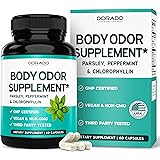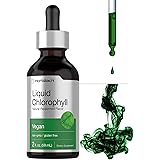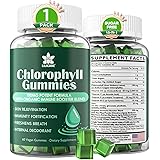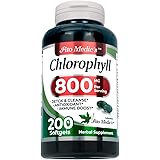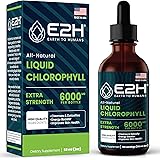The video above provides a concise overview of how the body processes alcohol, emphasizing key actions like hydration and allowing adequate time. While many individuals seek quick remedies to “flush alcohol out of your system,” the reality of alcohol metabolism is more nuanced. For instance, according to the National Institute on Alcohol Abuse and Alcoholism (NIAAA), approximately 28.5 million adults in the U.S. had alcohol use disorder (AUD) in 2021. Understanding how alcohol affects the body, and what truly helps versus what is merely a myth, is crucial for responsible consumption and overall well-being.
This article expands upon the foundational points presented in the video, delving deeper into the science of alcohol metabolism, clarifying common misconceptions, and highlighting the critical difference between temporary discomfort and the need for professional intervention.
Understanding Alcohol Metabolism: The Body’s Natural Process
When alcohol is consumed, it doesn’t just disappear. The human body has a sophisticated, albeit time-consuming, process to metabolize it. The liver is the primary organ responsible for breaking down alcohol, handling about 90% of it. Enzymes within the liver, primarily alcohol dehydrogenase (ADH) and aldehyde dehydrogenase (ALDH), convert alcohol into less toxic substances that can be eliminated.
This process occurs at a relatively consistent rate. On average, the liver can metabolize approximately one standard drink per hour. A standard drink is defined as 0.6 fluid ounces (14 grams) of pure alcohol, which equates to about 12 ounces of regular beer, 5 ounces of wine, or 1.5 ounces of distilled spirits. This rate is largely unaffected by external factors, meaning efforts to drastically “speed up” the elimination of alcohol are largely ineffective. Consequently, understanding this biological limit is paramount when considering how to handle alcohol in your system.
Tip #1: Hydrate with Water – Why It’s Crucial
The video correctly identifies hydration as a key factor. Alcohol is a diuretic, meaning it increases urine production and causes the body to lose fluids and essential electrolytes. This dehydration is a major contributor to many common hangover symptoms, such as headaches, fatigue, and dizziness. Adequate water intake, therefore, doesn’t directly speed up the metabolism of alcohol by the liver, but it significantly mitigates the uncomfortable side effects of dehydration.
Furthermore, staying hydrated supports overall bodily functions, including kidney function, which plays a role in excreting the byproducts of alcohol metabolism. The recommendation is not just to drink water *after* consuming alcohol, but also to intersperse alcoholic drinks with water during consumption, and to rehydrate thoroughly the next day. This proactive approach can make a substantial difference in how one feels as the body works to process alcohol.
Tip #2: Give It Time – The Non-Negotiable Factor
The most important, and often frustrating, truth about processing alcohol is that time is the only genuine solution for allowing your body to break it down. As established, the liver works at a fixed pace. No amount of coffee, cold showers, exercise, or greasy food will accelerate the metabolic process or lower your blood alcohol content (BAC) faster. These methods might make you feel more alert or temporarily mask the effects of alcohol, but they do not change the amount of alcohol in your bloodstream.
This is critically important for safety. Driving or operating machinery while still under the influence, even if you feel somewhat sober, can be incredibly dangerous. The legal limit for BAC for driving in most places is 0.08%, and reaching this level can impair judgment, coordination, and reaction time. Respecting the time needed for your body to fully process alcohol is a cornerstone of responsible consumption and preventing adverse outcomes.
Debunking “Flushing” Myths and Dangerous Methods
The concept of “flushing alcohol out of your system” quickly is a pervasive myth. Many dangerous and unproven methods are circulated, promising rapid detoxification. These can include excessive sweating in saunas, induced vomiting, or taking unverified “detox” supplements. Not only are these methods ineffective at speeding up alcohol metabolism, but they can also be harmful, leading to further dehydration, electrolyte imbalances, or other health complications.
The body’s natural detoxification system, primarily the liver and kidneys, is remarkably efficient but requires time. Focusing on hydration, rest, and proper nutrition supports these organs without attempting to force an unnatural acceleration of the process. For individuals who frequently seek to “flush alcohol” due to heavy drinking, it may signal a deeper issue that warrants professional attention.
Beyond the Morning After: Recognizing Alcohol Abuse
While the initial discussion centers on managing the acute effects of alcohol, the video’s third point introduces a far more serious concern: alcohol abuse and the need for treatment centers. It’s crucial to distinguish between occasional overindulgence and a pattern of problematic drinking that indicates alcohol use disorder (AUD).
AUD is a medical condition characterized by an impaired ability to stop or control alcohol use despite adverse social, occupational, or health consequences. Symptoms can range from mild to severe and include:
- Drinking more or for a longer time than intended.
- Wanting to cut down or stop drinking but being unable to.
- Spending a lot of time drinking or recovering from drinking.
- Having strong cravings for alcohol.
- Continuing to drink even when it causes problems with family or friends.
- Giving up important social, occupational, or recreational activities because of alcohol.
- Drinking in situations where it is physically hazardous (e.g., driving).
- Continuing to drink even though it is making a health problem worse.
- Needing to drink more to get the desired effect (tolerance).
- Experiencing withdrawal symptoms when the effects of alcohol wear off.
When Professional Help Is Needed: Alcohol Addiction Treatment
For those struggling with alcohol dependency, simply waiting for time to pass or hydrating is insufficient. The video correctly advises to “Detox with an Alcohol Addiction Treatment Center” if one is struggling with alcohol abuse. Professional alcohol addiction treatment centers offer a safe and medically supervised environment for detoxification, which is critical for individuals experiencing severe withdrawal symptoms. Attempting to detox at home can be dangerous, potentially leading to seizures, delirium tremens, or other life-threatening complications.
Beyond medical detox, these centers provide comprehensive care, including individual and group therapy, behavioral interventions, and support systems designed to address the underlying causes of addiction and develop healthy coping mechanisms. This holistic approach helps individuals achieve lasting sobriety and rebuild their lives. If you or a loved one is struggling with alcohol abuse, recognizing the need for professional help is the first courageous step. Organizations like Lighthouse Treatment Center offer the specialized care and support necessary to navigate the complex journey to recovery, providing an essential pathway to effectively managing and ultimately overcoming the challenges associated with alcohol and the desire to truly flush alcohol out of your system for good.





